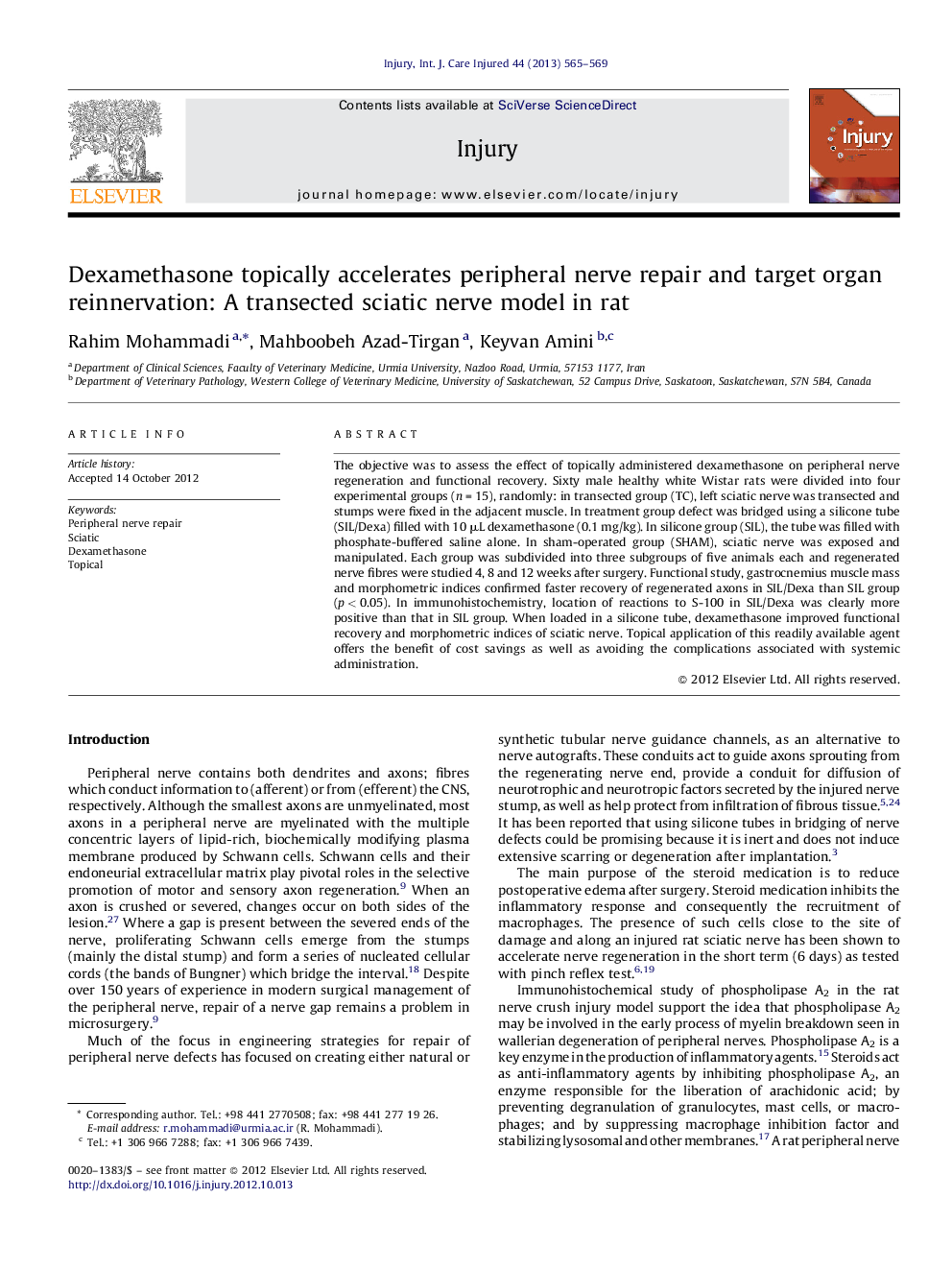| Article ID | Journal | Published Year | Pages | File Type |
|---|---|---|---|---|
| 3239461 | Injury | 2013 | 5 Pages |
The objective was to assess the effect of topically administered dexamethasone on peripheral nerve regeneration and functional recovery. Sixty male healthy white Wistar rats were divided into four experimental groups (n = 15), randomly: in transected group (TC), left sciatic nerve was transected and stumps were fixed in the adjacent muscle. In treatment group defect was bridged using a silicone tube (SIL/Dexa) filled with 10 μL dexamethasone (0.1 mg/kg). In silicone group (SIL), the tube was filled with phosphate-buffered saline alone. In sham-operated group (SHAM), sciatic nerve was exposed and manipulated. Each group was subdivided into three subgroups of five animals each and regenerated nerve fibres were studied 4, 8 and 12 weeks after surgery. Functional study, gastrocnemius muscle mass and morphometric indices confirmed faster recovery of regenerated axons in SIL/Dexa than SIL group (p < 0.05). In immunohistochemistry, location of reactions to S-100 in SIL/Dexa was clearly more positive than that in SIL group. When loaded in a silicone tube, dexamethasone improved functional recovery and morphometric indices of sciatic nerve. Topical application of this readily available agent offers the benefit of cost savings as well as avoiding the complications associated with systemic administration.
